New products at Crocus
by Sarah - March 27th, 2010.Filed under: Crocus, New Products.
New lines added today at Crocus
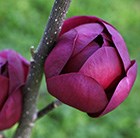
magnolia £39.99
Position: full sun or partial shadeSoil: moist, well-drained, acidic soilRate of growth: averageFlowering period: March to AprilHardiness: fully hardyDeep burgundy-purple, tulip-like flowers that grow up to 15cm in diameter, crowd the slender stems before the leaves emerge each spring. It is one of the darkest flowering of all the magnolias and it is quite simply gorgeous. Use it as a feature plant in a spring garden and underplant with an array of spring-flowering bulbs for a jaw-dropping display.Garden care: Requires minimal pruning. Remove any broken, diseased or crossing branches in midsummer. Plant in a sheltered spot, adding plenty of peat to the planting hole. Mulch in spring with manure and leafmould, especially on dry soils.
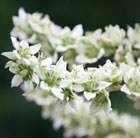
false hellebore £36.99
Position: partial shade – or full sun if the soil doesn’t dry outSoil: deep, fertile, moist but well drained soilRate of growth: averageFlowering period: June to JulyFlower colour: greeny-creamOther features: all parts of the plant are highly toxic if eaten and contact with the foliage may irritate the skinHardiness: fully hardyA rhizomatous perennial that is found growing in damp meadows and open woodland throughout the northern hemisphere, this plant will thrive in rich, moist soils in a lightly shaded spot. The pleated mid to dark green leaves form a cluster from which tall, branching spikes emerge in early summer. These spikes are covered in masses of tiny, star-shaped, greenish-white flowers. A widely used remedy in homeopathic medicine, parts of this plant have also been used in the past as arrow poison.Garden care: Try to keep it well watered and protect it from cold, drying winds.
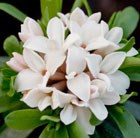
daphne £19.99
Position: full sun or partial shadeSoil: moderately fertile, well-drained, humus-rich soilRate of growth: slow-growing Flowering period: April to October Flower colour: white from pink budsOther features: all parts of the plant including the seed are highly toxic if ingested; contact with the sap may cause skin irritation; the flowers are followed by blackish-purple fruitHardiness: fully hardyThis compact evergreen daphne produces flowers on new growth, which means that the flowers keep on coming throughout spring, summer and autumn. It is a cross between D. caucasica and D. sericea, and is still quite rare. Its highly scented flowers will fill the air with their heady scent, so plant it near an entrance or pathway so you can enjoy it to the full.Garden care: Keep pruning to a minimum since the plant is very susceptible to die-back. Where necessary after flowering lightly trim back to remove misplaced branches and maintain a compact habit
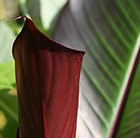
red abyssinian / Ethiopian banana (syn. Musa ensete rubra) £12.99
Position: full sun or partial shadeSoil: humus-rich soil (or loam-based potting compost – John Innes no. 3 for container-grown specimens)Rate of growth: fast-growing Flowering period: June to August Flower colour: whiteOther features: the white summer flowers are concealed within bronze-red bractsHardiness: tender Green leaves, flushed reddish-burgundy on a red-tinted ‘trunk’. A spectacular specimen plant for an exotic-style garden in a frost-free area, where temperatures fall below 7°C (45°F) it’s best grown in a large temperate greenhouse, shaded from hot sun.Garden care: During the growing season water regularly and apply a balanced liquid fertiliser each month. In frost-prone areas lift outdoor specimens before the first frosts, reducing the top-growth to the newest 2 or 3 leaves and cutting back the long roots. Overwinter under glass in a frost-free greenhouse until all risk of frost has passed

gothic-wall-mirror-seconds £12.99
Make a big saving with the Gothic wall mirrors as they are being classed as seconds. They have scratches / marks on the reflective acrylic.Create the illusion of space in a courtyard or add light to a shady corner or passageway with this striking gothic wall mirror. Made from cast-iron and reflective acrylic, it makes the perfect finishing touch to the patio, too.Size: 27x48cm

rose William Shakespeare (shrub) £12.99
Position: full sunSoil: fertile, humus-rich, moist, well-drained soilRate of growth: averageFlowering period: July and SeptemberFlower colour: rich crimsonOther features: excellent cut-flowersHardiness: fully hardyA truly superb variety with exquisite blooms of the richest crimson, which gradually deepen to a decadent purple. The flowers are deeply cupped at first becoming flatter as they age and have a strong old rose fragrance. An excellent rose that has good disease resistance. Launched at the Chelsea flower show 2000 by the famous rose breeder David Austin.Garden care: Before planting shorten thick roots to 25cm (10in) and reduce top-growth to an outward-facing bud 8-15cm (3-6in) above ground-level. Plant during a frost-free spell, incorporating well-rotted organic matter and a balanced fertiliser into the planting hole. Ensure that the ‘bud union’ (the bulge at the base of the shoots) is 2.5cm (1in) below the soil.All our roses are field grown. In October/November they are dug up and potted. However, they will not produce any new roots until spring, so don’t be surprised if the compost falls away from the roots when winter planting. Some suppliers send out ‘bare root’ plants unpotted, but we don’t as it is easier to manage them on the nursery in pots.
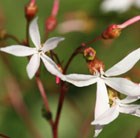
Bowman’s Root £9.99
A pretty perennial that bears masses of irregularly star-shaped white flowers from late spring to late summer. In autumn the foliage turns fiery red and the winter seedheads are a bonus too. Ideal for growing as a cut flower.Position: partial shadeSoil: fertile, well-drained soil, neutral to slightly acidic soilRate of growth: averageFlowering period: May to AugustFlower colour: whiteHardiness: fully hardyGarden care: Divide congested plants in spring or autumn. Protect young shoots from slug attack

lavender £8.99
Position: full sunSoil: fertile, well-drained soilRate of growth: averageFlowering period: July to SeptemberHardiness: fully hardyStunning, large, lilac-coloured, fragrant flower spikes appear in summer above slender, aromatic, silvery-grey leaves. This is a lovely lavender for edging paths and borders; the aromatic foliage perfumes the air if you brush against it. It also works well in a gravel garden, or clipped into a formal sphere for a contemporary look. The flower-spikes are highly attractive to bees and other beneficial insects. Garden care: Cut back the stalks after the flowers have faded. Carefully trim back in April, taking care not to cut into old wood.
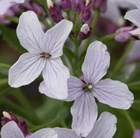
perennial honesty £6.99
Heart shaped leaves which can grow up to 8cm long, clothe the upright stems of this clump-forming perennial. These stems are topped by loose clusters of fragrant, lilac-white flowers in late spring and early summer. Once the flowers fade, they are followed by flat elliptical seed pods, which age to a beige colour that look like big, papery coins. If undisturbed, these will stay on the plant well into winter providing a long season of interest.Position: full sun or partial shadeSoil: fertile, moist but well-drained soilRate of growth: averageFlowering period: May and JuneFlower colour: lilac-whiteHardiness: fully hardyGarden care Easy to propagate from seed – just sow them in a seedbed in spring to produce new plants. Keep the soil damp until germination takes place. If the seedlings become over-crowded, thin out to 15cm (6in) apart. In autumn transplant the seedlings to their final flowering site 30cm (12in) apart.






